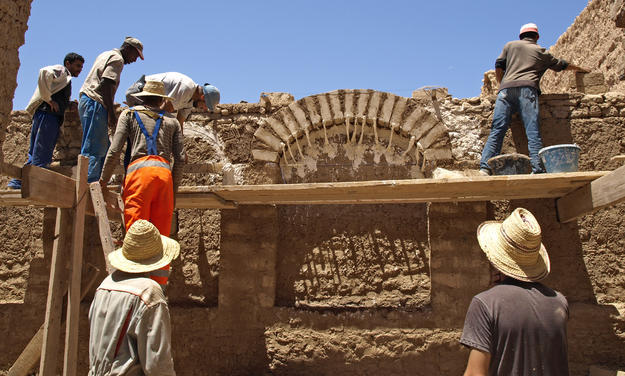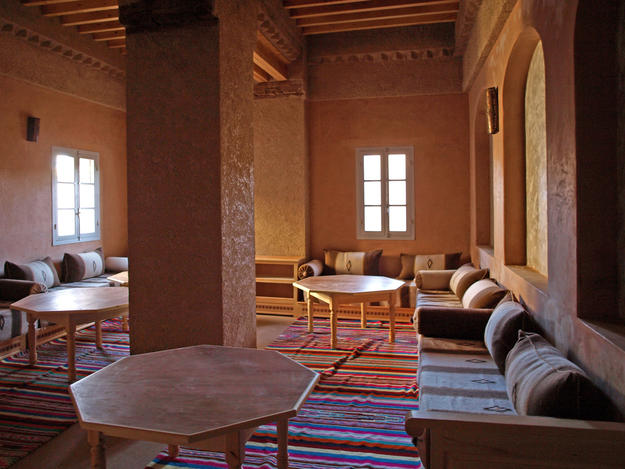Figuig
2016 World Monuments Watch
Figuig, a large oasis town in northern Morocco near the Algerian border, is characterized by its proximity to the Atlas Mountains and the extraordinary vista created by the tens of thousands of date palm trees that define the landscape of the town and its surroundings. For centuries, Figuig was an important stop on two caravan routes through Morocco. It was an inviting stop for pilgrims on their way to Mecca, as well as for travelers between Tangier, to the north, and Timbuktu, across the Sahara Desert to the south. The town developed seven ksour, or fortified districts, beginning in the eleventh century. Each ksar controlled its own date palm groves, and the communities vied with each other for rights over resources during most of Figuig’s history. Inside the crenellated walls, each district contains a dense ensemble of traditional Moroccan houses. The houses, known as riads, are centered on open courtyards, around which the private life of the inhabitants revolves.
Over the last two decades, Figuig has faced a paralyzing economic and social crisis that began when the border between Algeria and Morocco was closed, indefinitely, in 1994. The nearby crossing was the second-busiest along the 1,000-mile-long border between the two countries. Since then, trade with the Algerian hinterland dried up while the number of travelers fell, turning Figuig into an isolated outpost. Many inhabitants of Figuig chose to leave and the depopulation led to the abandonment of historic quarters, parts of which are now reduced to ruins. Nevertheless, Figuig remains an attractive destination for modern travelers. The town still produces textiles, embroidery, and carpets, and it is famous for its dates. This reliance on traditional production has meant that historic irrigation systems have been maintained and that the city has not lost its integrity.
The challenges that Figuig faces have been closely studied since 2008, through a succession of international collaborative initiatives. In 2011, the historic oasis town was added to Morocco’s Tentative List of properties to be nominated to the World Heritage List. Eventual reconciliation between Morocco and Algeria will benefit Figuig and other border towns. Until then, the 2016 World Monuments Watch calls for increased efforts to create local capacities in urban heritage management for the benefit of Figuig.
Since the Watch
In February 2016, the government of Morocco began construction of a fence and ditch along the borders of Figuig Province in order to address security concerns. Residents of the city have claimed that this development will be socially and economically destructive to Figuig, as the fence will close off all but one point of entrance to the province. Local advocates have expressed their concerns through a petition, the organization of street protests, and social media.



